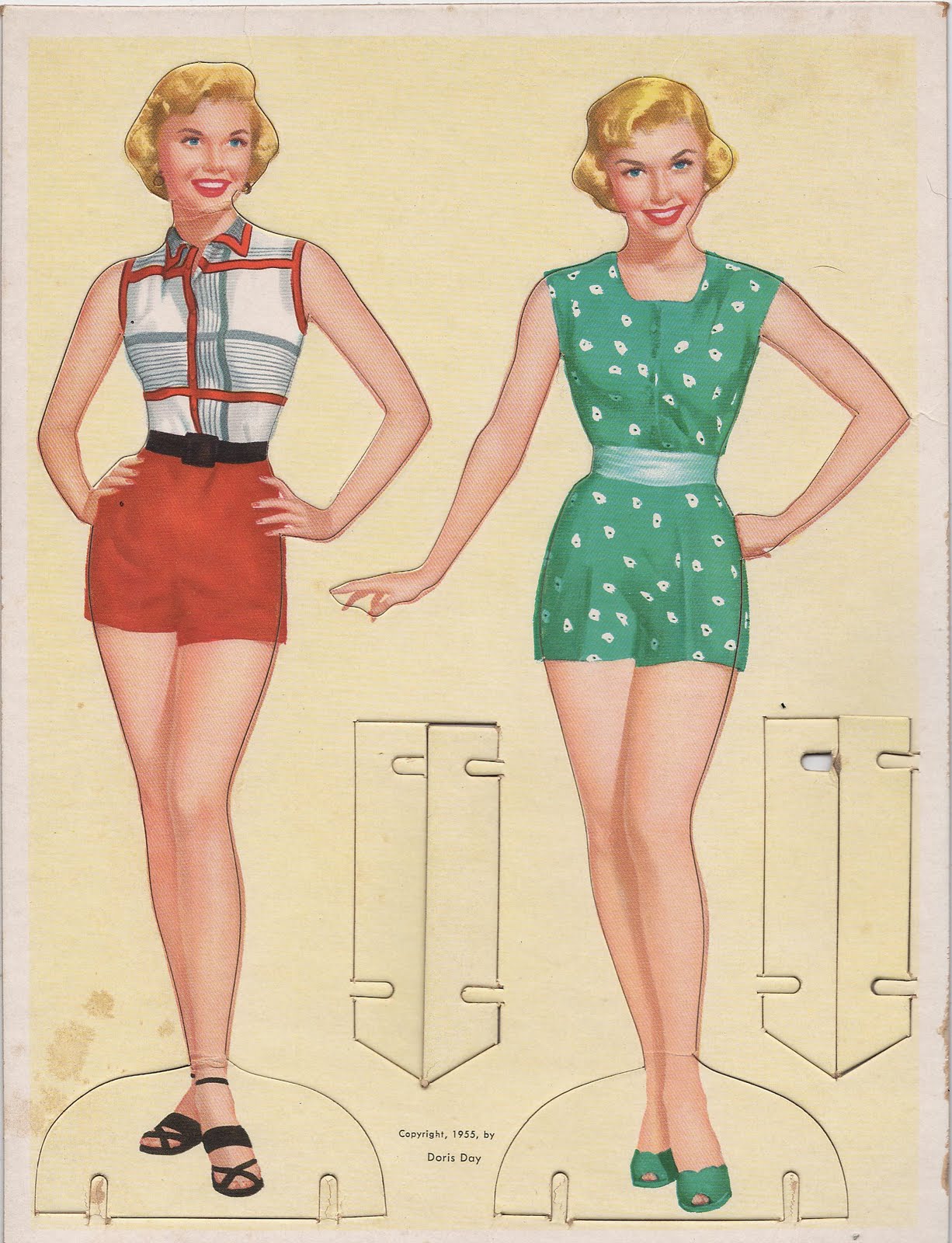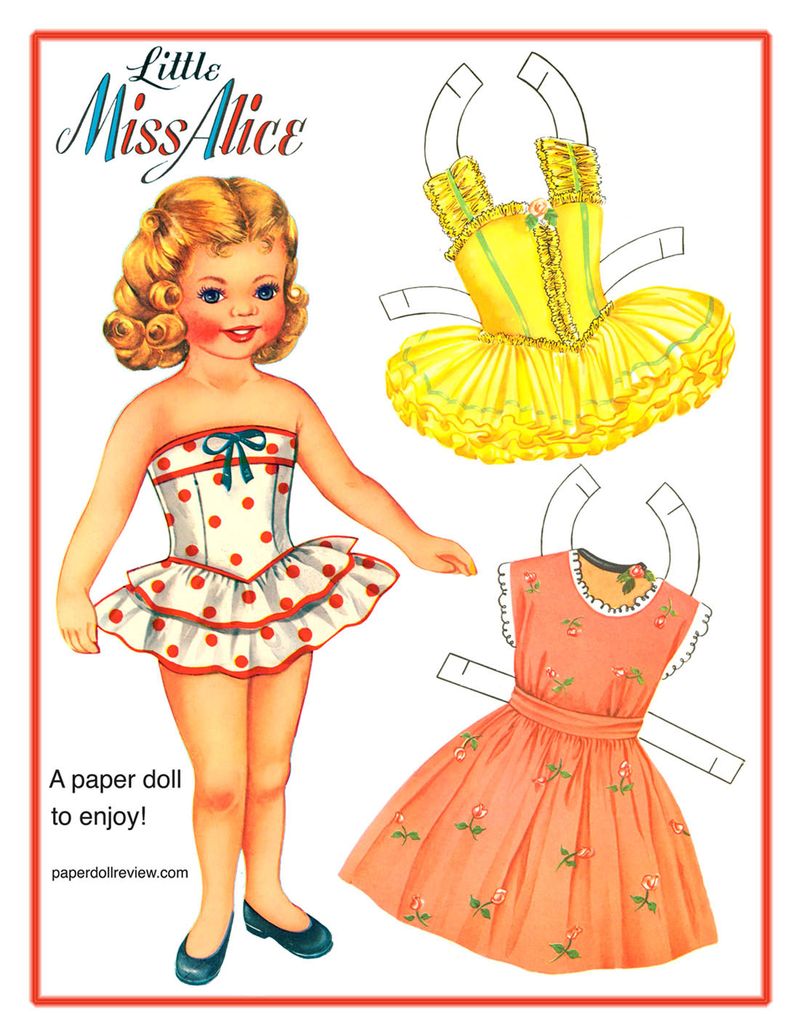Vintage paper dolls have captivated generations, offering a nostalgic glimpse into the past while igniting the creativity of both children and collectors alike. These charming collectibles are not just toys; they embody a rich history of fashion, art, and culture. In this article, we will delve into the enchanting world of vintage paper dolls, examining their origins, evolution, and enduring appeal.
From their inception in the 19th century to their revival in modern times, vintage paper dolls have undergone significant transformations. They have reflected changing societal norms, fashion trends, and artistic styles. As we explore this fascinating topic, we will uncover the various aspects that contribute to the popularity of these whimsical creations.
Whether you are a seasoned collector or a newcomer intrigued by vintage paper dolls, this comprehensive guide will provide you with valuable insights, tips, and resources to deepen your appreciation for these timeless treasures.
Table of Contents
- 1. The History of Vintage Paper Dolls
- 2. Types of Vintage Paper Dolls
- 3. Collecting Vintage Paper Dolls
- 4. Restoring Vintage Paper Dolls
- 5. Cultural Significance of Paper Dolls
- 6. Popular Vintage Paper Doll Brands
- 7. The Modern Revival of Paper Dolls
- 8. Resources for Paper Doll Enthusiasts
1. The History of Vintage Paper Dolls
Vintage paper dolls first emerged in the early 19th century, primarily in Europe and the United States. Initially designed for children's entertainment, they quickly evolved into a medium for artistic expression and fashion illustration. The earliest known paper dolls can be traced back to the Victorian era, where they were often crafted as intricate cut-out figures adorned with elaborate clothing.
As the 20th century progressed, the popularity of paper dolls surged, leading to the creation of themed sets based on contemporary fashion, movies, and popular culture. The rise of mass production allowed for wider distribution and accessibility, making paper dolls a staple in many households.
Throughout the decades, paper dolls have reflected the changing landscape of fashion and societal norms. From the flapper styles of the 1920s to the mod looks of the 1960s, vintage paper dolls serve as a time capsule that captures the essence of each era.
2. Types of Vintage Paper Dolls
Vintage paper dolls come in various styles and formats, catering to diverse interests and preferences. Here are some common types:
- Traditional Cut-Out Dolls: These feature a doll figure with a selection of clothes that can be cut out and dressed.
- Fashion Dolls: Often designed to showcase the latest fashion trends, these dolls highlight couture and designer styles.
- Themed Sets: These include dolls and outfits representing specific themes, such as holidays, historical periods, or popular media characters.
- Artistic Dolls: Some vintage paper dolls are created by renowned artists, making them valuable collectibles.
2.1 The Evolution of Paper Doll Designs
The designs of vintage paper dolls have evolved significantly over the years. Early dolls were often simplistic, but as printing techniques improved, the quality and detail of the illustrations increased. The introduction of color lithography in the late 19th century brought vibrant hues to paper dolls, enhancing their visual appeal.
2.2 Notable Artists and Designers
Many notable artists and designers have contributed to the world of vintage paper dolls. Some, like Eloise Wilkin and Mabel Lucie Attwell, gained fame for their charming illustrations that captured the hearts of children and collectors alike. Their unique styles and storytelling elements continue to resonate with enthusiasts today.
3. Collecting Vintage Paper Dolls
Collecting vintage paper dolls can be a rewarding and fulfilling hobby. Here are some tips for those interested in starting or expanding their collection:
- Research: Familiarize yourself with different types of paper dolls, their history, and notable brands.
- Attend Collectors' Fairs: These events often feature vendors selling vintage paper dolls and related memorabilia.
- Join Online Communities: Engage with fellow collectors through forums and social media groups to share knowledge and experiences.
- Preserve Your Collection: Store paper dolls in acid-free sleeves and avoid exposure to direct sunlight to prevent fading and deterioration.
4. Restoring Vintage Paper Dolls
Restoring vintage paper dolls requires care and skill. Here are some essential steps to consider:
- Assessment: Evaluate the condition of the doll and identify any repairs needed.
- Cleaning: Use a soft brush to remove dust and dirt without damaging the paper.
- Repairing Tears: Use archival tape or glue designed for paper to mend any tears or damage.
- Reinforcement: Consider reinforcing fragile areas to ensure longevity.
5. Cultural Significance of Paper Dolls
Vintage paper dolls hold cultural significance beyond their aesthetic appeal. They often reflect the values, trends, and aspirations of the time in which they were created. For example, during World War II, paper dolls became a form of escapism for children, allowing them to engage in imaginative play despite the hardships of the era.
Moreover, paper dolls have been used as educational tools, teaching children about fashion, history, and creativity. They continue to inspire artists, designers, and storytellers, highlighting their enduring impact on popular culture.
6. Popular Vintage Paper Doll Brands
Several brands have gained recognition for their high-quality vintage paper dolls. Some of the most notable include:
- McLoughlin Brothers: Known for their intricate designs and innovative packaging.
- Whitman Publishing: Famous for producing themed sets that captured the imagination of children.
- American Girl: Although modern, their paper dolls pay homage to the vintage style and storytelling tradition.
7. The Modern Revival of Paper Dolls
In recent years, vintage paper dolls have experienced a resurgence in popularity. Artists and designers are creating contemporary versions that pay tribute to the classic style while incorporating modern themes and aesthetics. This revival has sparked renewed interest among collectors and enthusiasts, as well as attracting a new generation of fans.
Many online platforms and social media channels now feature digital paper dolls, allowing for interactive play and customization. This evolution highlights the adaptability of paper dolls and their ability to remain relevant in an ever-changing world.
8. Resources for Paper Doll Enthusiasts
For those looking to delve deeper into the world of vintage paper dolls, here are some valuable resources:
- Books: Look for titles dedicated to the history and art of paper dolls, such as "The Great American Paper Doll Book" by Barbara Lee.
- Websites: Join online forums and websites dedicated to paper doll collecting, like the Paper Doll Review.
- Social Media Groups: Engage with communities on platforms like Facebook, where collectors share their finds and restoration tips.
Conclusion
Vintage paper dolls are more than mere collectibles; they are a reflection of our cultural heritage and a testament to the creativity of generations past. By exploring their history, types, and significance, we can appreciate the timeless charm they bring to our lives.
If you are inspired to dive into the world of vintage paper dolls, consider starting your collection, restoring a cherished doll, or engaging with fellow enthusiasts online. Your journey into this delightful realm awaits!
Closing Thoughts
Thank you for exploring the enchanting world of vintage paper dolls with us. We hope this article has sparked your interest and encouraged you to discover more about these charming treasures. Don't forget to leave a comment, share your thoughts, or explore more articles on our site. We look forward to seeing you again soon!




